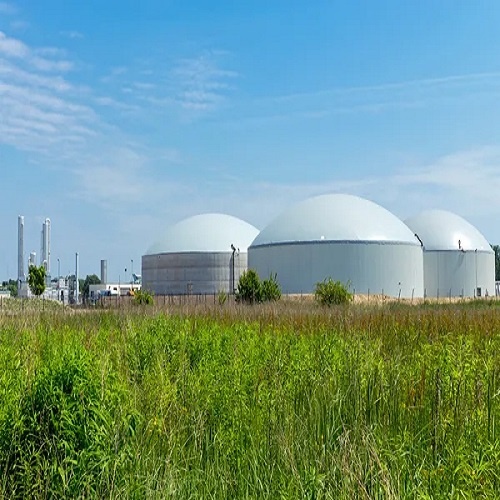India recently announced a significant initiative towards a cleaner and more sustainable energy future – the Compressed Bio-Gas (CBG) Blending Mandate. This notification outlines the government’s plan to blend CBG with Compressed Natural Gas (CNG) and Piped Natural Gas (PNG) across the City Gas Distribution (CGD) network. Let’s delve deeper into this policy and its potential implications.
What is the CBG Blending Mandate?
The CBG Blending Mandate, also known as the CBO, requires CGD entities to mix a specific percentage of CBG with the natural gas used for both transportation (CNG) and domestic (PNG) purposes. This mandate aims to increase the demand for CBG within the CGD sector, propelling India’s journey towards its “Net Zero” emission goals.
Key Features of the Mandate:
Phased Implementation: The CBO will be rolled out in phases:
Voluntary Phase: Until fiscal year 2024-25, blending will be voluntary.
Mandatory Phases: Starting from 2025-26, the mandatory blending obligation will gradually increase:
1% in 2025-26
3% in 2026-27
4% in 2027-28
Reaching 5% from 2028-29 onwards
Ensuring Green Credentials: Mechanisms like open access, book and claim, and mass balancing are proposed to ensure the renewable origin of CBG and facilitate its trade as a green fuel.
Central Repository Body: The Petroleum Planning and Analysis Cell (PPAC) will function as the Central Repository Body (CRB), formulating and implementing operational guidelines for the blending obligation.
Expected Benefits:
Environmentally Friendly: CBG production from biomass reduces reliance on fossil fuels and mitigates greenhouse gas emissions.
Improved Waste Management: CBG production utilizes organic waste, reducing landfill use and associated methane emissions.
Cleaner Air: BioCNG, derived from CBG, emits fewer harmful pollutants compared to gasoline or diesel, contributing to improved air quality.
Sustainable Practices: This policy promotes sustainable energy practices by reducing dependence on conventional fuels and fostering a circular economy.
Economic Advantages: Local production of BioCNG can potentially *reduce the energy import bill and stimulate the local economy.
Supporting Ecosystem:
Several existing policies and programs support the CBG Blending Mandate and its goals:
Sustainable Alternative Towards Affordable Transportation (SATAT): Aims to establish 5,000 CBG plants across the country by 2023, promoting CBG use in transportation.
National Bio Energy Programme: Provides financial assistance for CBG/biogas plants, facilitating the development of the CBG sector.
Swachh Bharat Mission Urban 2.0: Offers additional support for Municipal Solid Waste (MSW) based CBG plants, encouraging responsible waste management.
Market Development Assistance: Incentivizes the production of organic fertilizer from CBG projects, promoting resource efficiency.
Sub Mission on Agricultural Mechanization and Crop Residue Management: Encourages the use of technology for biomass collection, aiding in CBG production.
Policy Guidelines for Co-mingling of CBG with Natural Gas: Facilitates seamless integration of CBG into the CGD network.
Conclusion:
The CBG Blending Mandate signifies India’s commitment to environmental sustainability and energy security. By integrating CBG into its energy mix, the country aims to reduce dependence on fossil fuels, manage waste effectively, and promote a cleaner future. This initiative, supported by existing policies and programs, holds immense potential to transform India’s energy landscape and contribute to achieving its ambitious “Net Zero” goals.
Disclaimer: The views and opinions expressed in the article by Dilip Patil, Managing Director of Samarth SSK Ltd., are solely his own.












